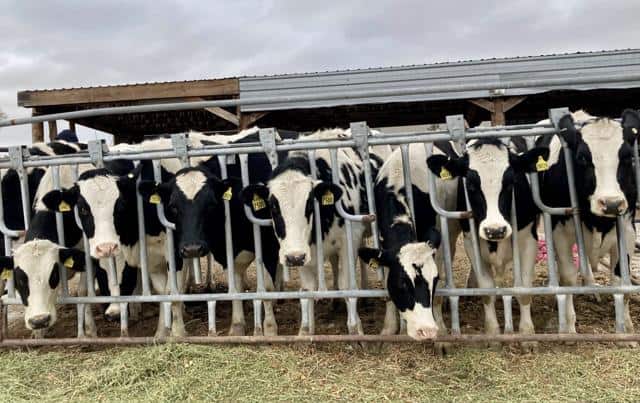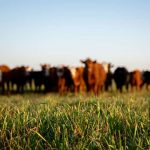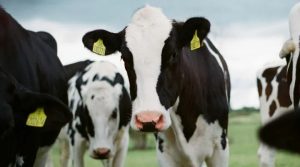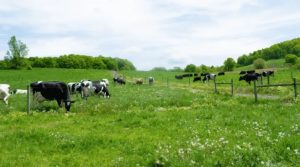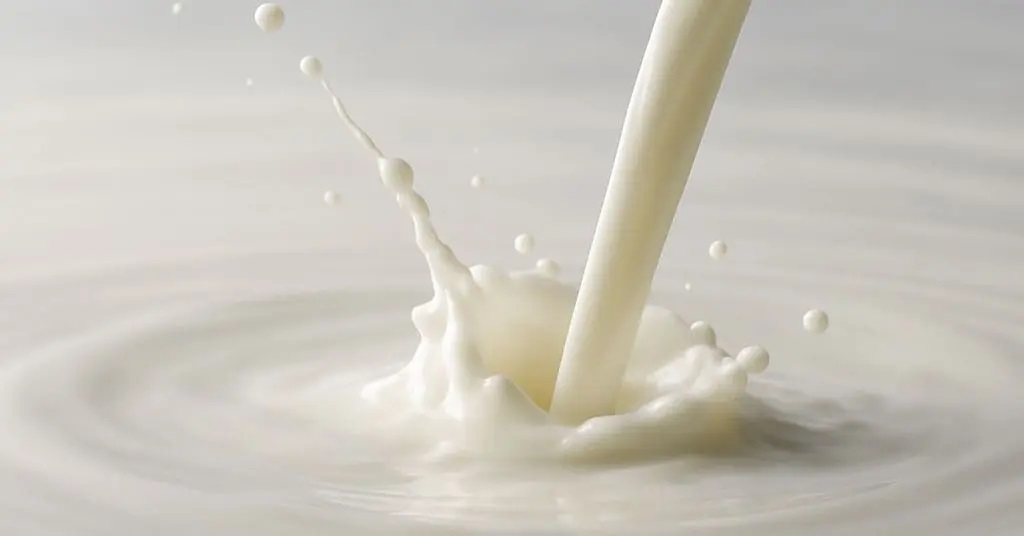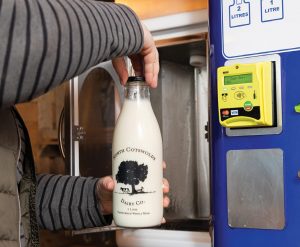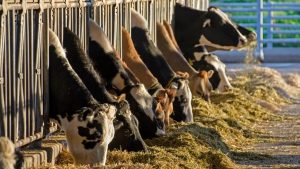
Twin Falls County is one of Idaho’s heavyweight counties when it comes to agriculture.
According to the 2017 Census of Agriculture, agricultural producers in Twin Falls County brought in $680 million in farm-gate revenue during the census year, ranking No. 3 in in the state.
Outside of the city of Twin Falls, “Pretty much the entire county is used for agriculture of some sort, whether that’s grazing, dairy, potatoes, sugar beets, hay, grain or corn,” says Hansen farmer Larry Hollifield. “We’re a very heavily agricultural county.”
Farming and ranching are the backbone of the county’s economy, says Tyler Hyink, who is part of a family-owned dairy operation just south of Twin Falls.
“Agriculture drives the economy in Twin Falls County,” he says.
Hollifield, president of Twin Falls County Farm Bureau, points out that Buhl is also known as the trout capital of the world and a lot of seed beans and malt barley are also produced here.
“We do a great job with our malt barley production here,” says Hollifield, who grows sugar beets, wheat, barley, corn, alfalfa and dry beans. “The irrigation we have up here and the dry climate allows us to grow an excellent barley crop.”
When it comes to total farm-gate revenue in Twin Falls County, the dairy industry is the No. 1 ag commodity in the county.
According to the ag census, milk brought in $373 million in farm-gate revenue in the county during the 2017 census year.
“The climate here is ideal for dairy cows,” Hyink says.
According to the ag census, there were 1,211 farms in Twin Falls County and 468,809 acres of land in farming in 2017. Fifty-five percent of that land was used as cropland and 42% as pastureland.
According to the ag census, there were 199,000 cattle and calves in the county in 2017 and a lot of the crops grown in Twin Falls County centered around the dairy and cattle industry.
There were 84,037 acres of hay grown in Twin Falls County during the ag census year, as well as 41,625 acres of corn, 24,825 acres of barley, 20,794 acres of dry edible beans and 19,359 acres of wheat.
Hollifield said the main focus of the Twin Falls County Farm Bureau is helping the county’s youth and educating them about agriculture.
“The board really puts a lot of emphasis on the youth programs in Twin Falls County,” he says. “The youth are vital to our future.”
Besides providing ag scholarships, the county Farm Bureau organization also supports the area’s FFA and 4-H youth programs and provides grants to local ag teachers, he says.
“We try to help every 4-H and FFA program we can,” Hollifield says. “We want to help get these kids involved with agriculture and continue the legacy of agriculture we have here in Twin Falls County and in the state of Idaho.”
The Twin Falls County Farm Bureau organization also donated $10,000 this year toward the rebuilding of pig barns at the county fairgrounds that are used by FFA and 4-H kids, says Hyink, who serves as vice president for TFCFB.
“We focus a lot on helping the youth,” he says. “We feel the next generation is what is going to keep agriculture alive around here. It’s important to educate the youth on agriculture and try to get them involved.”
TFCFB also focuses heavily on the policy side of agriculture, Hollifield says. That includes staying engaged with local officials and legislators and statewide farm organizations, including Idaho Farm Bureau Federation and Food Producers of Idaho.
“We really stay engaged in policy development and agriculture-related issues … to get better legislation and support for agriculture in Idaho,” Hollifield says.
He says the TFCFB always welcomes new members who want to serve on one of the organization’s boards or who just want to pitch fresh ideas.
“We’re always looking for new, fresh ideas and people to collaborate with for the betterment of agriculture,” he says.
States that grow the most vegetables
States that grow the most vegetables

No matter where you live, however, it is likely that the sprouts and spuds you’re perusing down the street were grown in one of just a select handful of locations. Ten states were responsible for 79% of U.S. vegetable sales in 2017; among those states, California on its own accounted for 42%. Among the vegetables that are imported, about three out of every four pounds of international vegetables come from Mexico.
Stacker cited data from the Department of Agriculture’s Agricultural Census, most recently completed in 2017, to identify the states producing the most vegetables. A few important caveats to note: Data on acreage for Kansas and Nevada was not available, so these two states are listed as unranked with information on the number of farms. States are ranked by the harvested acreage of vegetables for fresh consumption, rather than processing. Items like potatoes are considered vegetables, but often go on to processing rather than produce aisle sales, and are thus not counted amongst statewide vegetable sales.
Read on to find out how much your state contributes to the number of fresh veggies on shelves at markets across the U.S.

AZP Worldwide // Shutterstock
Kansas (unranked)

– Farms producing fresh vegetables: 484
– Acres harvested for processing: Data not available
– Farms producing vegetables for processing: 50
Jacob Boomsma // Shutterstock
Nevada (unranked)

– Farms producing fresh vegetables: 96
– Acres harvested for processing: Data not available
– Farms producing vegetables for processing: 18
randy andy // Shutterstock
#48. Wyoming

– Farms producing fresh vegetables: 76 (8.0 acres per farm)
– Acres harvested for processing: 7 acres (1.1% of all vegetable production)
– Farms producing vegetables for processing: 17 (0.4 acres per farm)
LBill45 // Shutterstock
#47. South Dakota

– Farms producing fresh vegetables: 189 (4.4 acres per farm)
– Acres harvested for processing: 2 acres (0.2% of all vegetable production)
– Farms producing vegetables for processing: 5 (0.4 acres per farm)
JohnDSmith // Shutterstock
#46. Alaska

– Farms producing fresh vegetables: 260 (3.9 acres per farm)
– Acres harvested for processing: 12 acres (1.2% of all vegetable production)
– Farms producing vegetables for processing: 25 (0.5 acres per farm)
Canva
#45. Rhode Island

– Farms producing fresh vegetables: 208 (10.0 acres per farm)
– Acres harvested for processing: 158 acres (7.1% of all vegetable production)
– Farms producing vegetables for processing: 33 (4.8 acres per farm)
George Wirt // Shutterstock
#44. West Virginia

– Farms producing fresh vegetables: 956 (2.5 acres per farm)
– Acres harvested for processing: 224 acres (8.4% of all vegetable production)
– Farms producing vegetables for processing: 196 (1.1 acres per farm)
Sean Pavone // Shutterstock
#43. Vermont

– Farms producing fresh vegetables: 692 (4.9 acres per farm)
– Acres harvested for processing: 83 acres (2.4% of all vegetable production)
– Farms producing vegetables for processing: 77 (1.1 acres per farm)
Albert Pego // Shutterstock
#42. New Hampshire

– Farms producing fresh vegetables: 585 (6.2 acres per farm)
– Acres harvested for processing: 39 acres (1.1% of all vegetable production)
– Farms producing vegetables for processing: 38 (1.0 acres per farm)
Sean Pavone // Shutterstock
#41. Oklahoma

– Farms producing fresh vegetables: 500 (8.4 acres per farm)
– Acres harvested for processing: 2,677 acres (39.0% of all vegetable production)
– Farms producing vegetables for processing: 14 (191.2 acres per farm)
Sean Pavone // Shutterstock
#40. Iowa

– Farms producing fresh vegetables: 1,070 (4.6 acres per farm)
– Acres harvested for processing: 2,822 acres (36.6% of all vegetable production)
– Farms producing vegetables for processing: 31 (91.0 acres per farm)
Jacob Boomsma // Shutterstock
#39. Utah

– Farms producing fresh vegetables: 639 (9.0 acres per farm)
– Acres harvested for processing: 948 acres (14.2% of all vegetable production)
– Farms producing vegetables for processing: 96 (9.9 acres per farm)
Sean Pavone // Shutterstock
#38. Hawaii

– Farms producing fresh vegetables: 840 (9.7 acres per farm)
– Acres harvested for processing: 415 acres (4.8% of all vegetable production)
– Farms producing vegetables for processing: 137 (3.0 acres per farm)
Canva
#37. Louisiana

– Farms producing fresh vegetables: 741 (11.2 acres per farm)
– Acres harvested for processing: 4,655 acres (36.0% of all vegetable production)
– Farms producing vegetables for processing: 143 (32.6 acres per farm)
Sean Pavone // Shutterstock
#36. Missouri

– Farms producing fresh vegetables: 1,373 (6.1 acres per farm)
– Acres harvested for processing: 10,069 acres (54.5% of all vegetable production)
– Farms producing vegetables for processing: 217 (46.4 acres per farm)
TommyBrison // Shutterstock
#35. Kentucky

– Farms producing fresh vegetables: 2,351 (3.6 acres per farm)
– Acres harvested for processing: 442 acres (4.9% of all vegetable production)
– Farms producing vegetables for processing: 400 (1.1 acres per farm)
Rotorhead 30A Productions // Shutterstock
#34. Connecticut

– Farms producing fresh vegetables: 957 (9.4 acres per farm)
– Acres harvested for processing: 233 acres (2.5% of all vegetable production)
– Farms producing vegetables for processing: 60 (3.9 acres per farm)
Sean Pavone // Shutterstock
#33. Arkansas

– Farms producing fresh vegetables: 715 (13.3 acres per farm)
– Acres harvested for processing: 1,562 acres (14.1% of all vegetable production)
– Farms producing vegetables for processing: 112 (13.9 acres per farm)
Canva
#32. Delaware

– Farms producing fresh vegetables: 148 (77.6 acres per farm)
– Acres harvested for processing: 22,069 acres (65.8% of all vegetable production)
– Farms producing vegetables for processing: 79 (279.4 acres per farm)
Real Window Creative // Shutterstock
#31. Montana

– Farms producing fresh vegetables: 380 (30.7 acres per farm)
– Acres harvested for processing: 71 acres (0.6% of all vegetable production)
– Farms producing vegetables for processing: 52 (1.4 acres per farm)
Mihai_Andritoiu // Shutterstock
#30. Maryland

– Farms producing fresh vegetables: 881 (13.8 acres per farm)
– Acres harvested for processing: 17,167 acres (58.5% of all vegetable production)
– Farms producing vegetables for processing: 135 (127.2 acres per farm)
Sean Pavone // Shutterstock
#29. Alabama

– Farms producing fresh vegetables: 1,482 (9.4 acres per farm)
– Acres harvested for processing: 5,682 acres (28.9% of all vegetable production)
– Farms producing vegetables for processing: 10 (568.2 acres per farm)
Kevin Ruck // Shutterstock
#28. Nebraska

– Farms producing fresh vegetables: 408 (34.9 acres per farm)
– Acres harvested for processing: 9,026 acres (38.8% of all vegetable production)
– Farms producing vegetables for processing: 42 (214.9 acres per farm)
Katherine Welles // Shutterstock
#27. Illinois

– Farms producing fresh vegetables: 1,246 (12.0 acres per farm)
– Acres harvested for processing: 46,462 acres (75.7% of all vegetable production)
– Farms producing vegetables for processing: 371 (125.2 acres per farm)
Sean Pavone // Shutterstock
#26. New Mexico

– Farms producing fresh vegetables: 1,476 (11.5 acres per farm)
– Acres harvested for processing: 10,973 acres (39.2% of all vegetable production)
– Farms producing vegetables for processing: 224 (49.0 acres per farm)
Sean Pavone // Shutterstock
#25. Tennessee

– Farms producing fresh vegetables: 1,844 (9.5 acres per farm)
– Acres harvested for processing: 10,116 acres (36.5% of all vegetable production)
– Farms producing vegetables for processing: 343 (29.5 acres per farm)
Kevin Ruck // Shutterstock
#24. Massachusetts

– Farms producing fresh vegetables: 1,360 (13.5 acres per farm)
– Acres harvested for processing: 608 acres (3.2% of all vegetable production)
– Farms producing vegetables for processing: 112 (5.4 acres per farm)
Sean Pavone // Shutterstock
#23. Virginia

– Farms producing fresh vegetables: 1,726 (11.5 acres per farm)
– Acres harvested for processing: 2,765 acres (12.2% of all vegetable production)
– Farms producing vegetables for processing: 260 (10.6 acres per farm)
Sean Pavone // Shutterstock
#22. Indiana

– Farms producing fresh vegetables: 1,327 (15.1 acres per farm)
– Acres harvested for processing: 20,149 acres (50.2% of all vegetable production)
– Farms producing vegetables for processing: 192 (104.9 acres per farm)
Sean Pavone // Shutterstock
#21. Mississippi

– Farms producing fresh vegetables: 1,247 (18.2 acres per farm)
– Acres harvested for processing: 14,180 acres (38.5% of all vegetable production)
– Farms producing vegetables for processing: 287 (49.4 acres per farm)
Canva
#20. South Carolina

– Farms producing fresh vegetables: 1,674 (15.4 acres per farm)
– Acres harvested for processing: 4,564 acres (15.1% of all vegetable production)
– Farms producing vegetables for processing: 106 (43.1 acres per farm)
f11photo // Shutterstock
#19. Ohio

– Farms producing fresh vegetables: 2,772 (9.4 acres per farm)
– Acres harvested for processing: 9,331 acres (26.4% of all vegetable production)
– Farms producing vegetables for processing: 421 (22.2 acres per farm)
Canva
#18. Minnesota

– Farms producing fresh vegetables: 1,634 (17.5 acres per farm)
– Acres harvested for processing: 183,892 acres (86.5% of all vegetable production)
– Farms producing vegetables for processing: 1,257 (146.3 acres per farm)
Canva
#17. Maine

– Farms producing fresh vegetables: 1,337 (23.4 acres per farm)
– Acres harvested for processing: 31,013 acres (49.8% of all vegetable production)
– Farms producing vegetables for processing: 195 (159.0 acres per farm)
Joseph Sohm // Shutterstock
#16. North Dakota

– Farms producing fresh vegetables: 186 (195.3 acres per farm)
– Acres harvested for processing: 42,673 acres (54.0% of all vegetable production)
– Farms producing vegetables for processing: 80 (533.4 acres per farm)
Jacob Boomsma // Shutterstock
#15. Pennsylvania

– Farms producing fresh vegetables: 4,062 (9.0 acres per farm)
– Acres harvested for processing: 11,495 acres (23.9% of all vegetable production)
– Farms producing vegetables for processing: 444 (25.9 acres per farm)
ESB Professional // Shutterstock
#14. Oregon

– Farms producing fresh vegetables: 1,679 (22.8 acres per farm)
– Acres harvested for processing: 115,707 acres (75.1% of all vegetable production)
– Farms producing vegetables for processing: 440 (263.0 acres per farm)
Sean Pavone // Shutterstock
#13. New Jersey

– Farms producing fresh vegetables: 1,332 (30.8 acres per farm)
– Acres harvested for processing: 6,793 acres (14.2% of all vegetable production)
– Farms producing vegetables for processing: 159 (42.7 acres per farm)
Mihai_Andritoiu // Shutterstock
#12. Wisconsin

– Farms producing fresh vegetables: 2,404 (24.1 acres per farm)
– Acres harvested for processing: 193,180 acres (76.9% of all vegetable production)
– Farms producing vegetables for processing: 832 (232.2 acres per farm)
Mihai_Andritoiu // Shutterstock
#11. Michigan

– Farms producing fresh vegetables: 2,808 (22.7 acres per farm)
– Acres harvested for processing: 101,754 acres (61.4% of all vegetable production)
– Farms producing vegetables for processing: 631 (161.3 acres per farm)
Sean Pavone // Shutterstock
#10. New York

– Farms producing fresh vegetables: 3,399 (19.1 acres per farm)
– Acres harvested for processing: 59,879 acres (48.0% of all vegetable production)
– Farms producing vegetables for processing: 484 (123.7 acres per farm)
Wangkun Jia // Shutterstock
#9. Colorado

– Farms producing fresh vegetables: 974 (77.6 acres per farm)
– Acres harvested for processing: 3,690 acres (4.7% of all vegetable production)
– Farms producing vegetables for processing: 134 (27.5 acres per farm)
Canva
#8. Washington

– Farms producing fresh vegetables: 2,047 (38.6 acres per farm)
– Acres harvested for processing: 246,543 acres (75.7% of all vegetable production)
– Farms producing vegetables for processing: 518 (476.0 acres per farm)
Agnieszka Gaul // Shutterstock
#7. Texas

– Farms producing fresh vegetables: 2,184 (38.7 acres per farm)
– Acres harvested for processing: 17,659 acres (17.3% of all vegetable production)
– Farms producing vegetables for processing: 266 (66.4 acres per farm)
Sean Pavone // Shutterstock
#6. Georgia

– Farms producing fresh vegetables: 1,914 (53.2 acres per farm)
– Acres harvested for processing: 6,902 acres (6.4% of all vegetable production)
– Farms producing vegetables for processing: 102 (67.7 acres per farm)
Canva
#5. North Carolina

– Farms producing fresh vegetables: 3,245 (37.7 acres per farm)
– Acres harvested for processing: 32,927 acres (21.2% of all vegetable production)
– Farms producing vegetables for processing: 585 (56.3 acres per farm)
Sharkshock // Shutterstock
#4. Arizona

– Farms producing fresh vegetables: 1,259 (112.5 acres per farm)
– Acres harvested for processing: 3,407 acres (2.3% of all vegetable production)
– Farms producing vegetables for processing: 74 (46.0 acres per farm)
Sean Pavone // Shutterstock
#3. Idaho

– Farms producing fresh vegetables: 976 (209.1 acres per farm)
– Acres harvested for processing: 150,206 acres (42.4% of all vegetable production)
– Farms producing vegetables for processing: 402 (373.6 acres per farm)
Charles Knowles // Shutterstock
#2. Florida

– Farms producing fresh vegetables: 1,766 (117.2 acres per farm)
– Acres harvested for processing: 38,325 acres (15.6% of all vegetable production)
– Farms producing vegetables for processing: 53 (723.1 acres per farm)
Mia2you // Shutterstock
#1. California

– Farms producing fresh vegetables: 4,468 (194.8 acres per farm)
– Acres harvested for processing: 300,299 acres (25.7% of all vegetable production)
– Farms producing vegetables for processing: 942 (318.8 acres per farm)
Data reporting by Emma Rubin. Photo selection by Clarese Moller.
Marek Masik // Shutterstock
SEAN ELLIS Idaho Farm Bureau Federation
